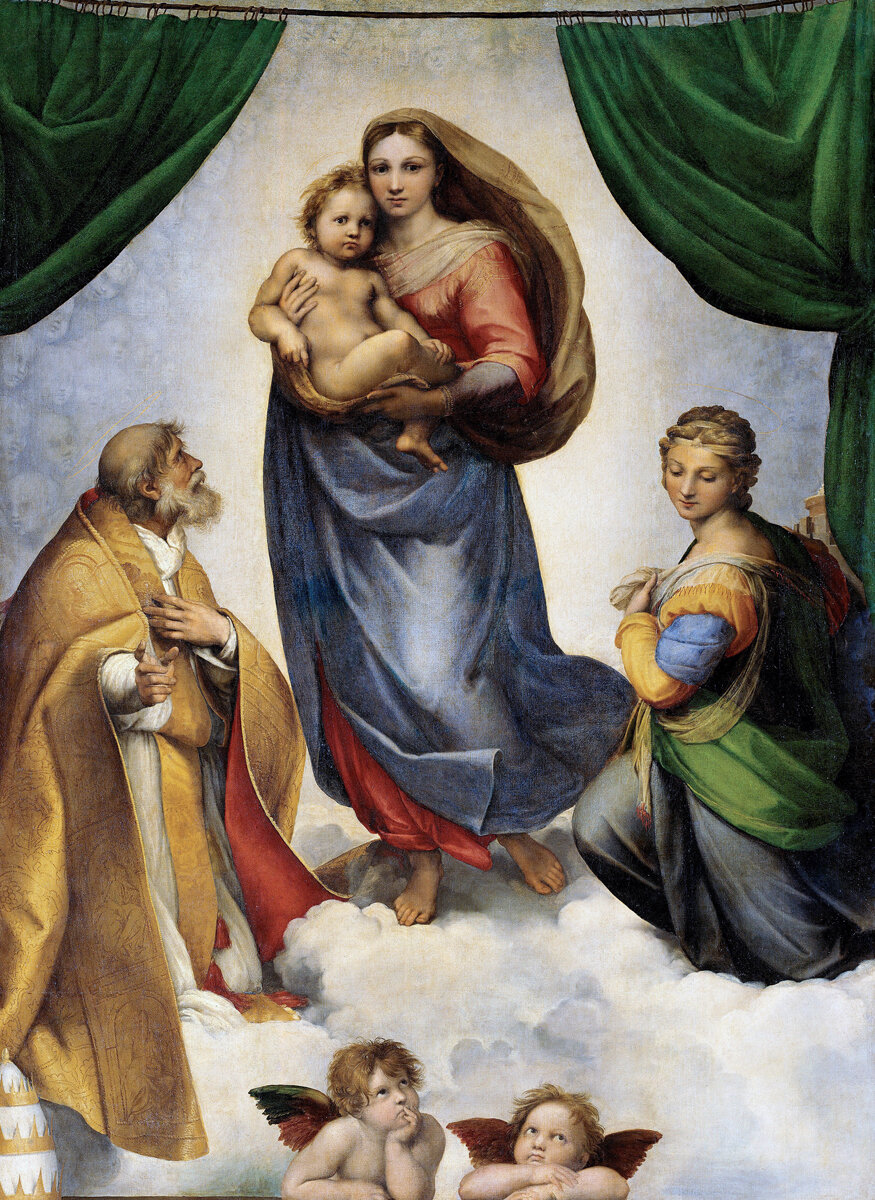The Two Cherubs
The Two Cherubs, a small part of a larger painting by Raphael titled Sistine Madonna. These two little guys have become iconic in their own right, and their upward gaze represents the human need to escape the Earth’s surface.
For nearly all of human history, the space above our heads represented the unknown. It was a place we couldn’t reach, which created a yearning within us. Our ancestors would look up in awe, longing to satiate the innate need within us for verticality. The two little cherubs pictured above encapsulate this innate need to escape the earth’s surface, and their resulting fame apart from the painting they inhabit serves to illustrate this.
The Two Cherubs, as the image has been dubbed, is part of a larger painting called The Sistine Madonna, painted by Rafael in 1513. It features the Madonna holding the Christ Child, flanked by two saints. The figures are placed among the clouds, suggesting it’s a scene from heaven. At the base of the painting are the two winged cherubs, looking up at the scene from below.
The Sistine Madonna, by Raphael in 1513, showing the Two Cherubs at the bottom, looking up at the Madonna. This is a scene from heaven, with the figures standing among the clouds.
It’s a curious addition to the work, especially since the cloudscape background is already full of stylized cherubs, made to blend into the clouds. Also curious is their placement, at the base of the composition. Winged creatures are usually located in the upper areas of a work such as this, to symbolize the power of flight. This probably explains their expressions, which give off a sense of boredom and longing, especially because they’re not even looking at the Madonna or the Christ Child. Their gaze is off to the right of the main subjects, as if their minds are focused on other things.
The Two Cherubs seem to be inhabiting a different painting. They have the gift of flight, but they’re not flying. They’re up in the clouds, but couldn’t care less about the figures above them. They just look up with a sense of longing at the space above their heads, doomed to an existence of looking up from below. This is why they’re famous in their own right. Various theories attempt to explain the cherubs’ inclusion in the work, because they seem so out of place. Regardless of their true origin, they became famous because each and every one of us can connect with them. They represent the human need for verticality, which is so deeply rooted in us that Jesus Christ is not the subject of their gaze.
You can find the Two Cherubs on postcards, stamps, coffee mugs, wrapping paper, and various other merchandise. They’ve been the subject of memes and they’ve been photoshopped in various ways. They’ve carved out a niche in popular culture, and it’s safe to say they’re much more widely known than the painting they reside in. It makes sense, since we all seek to escape the surface of the earth, and the Two Cherubs encapsulate this need. Had they been shown flying above the Madonna, focused on baby Jesus, they’d be just another pair of cherubs, along with the countless others depicted in art throughout the Renaissance.
Check out more examples of verticality in the arts.


